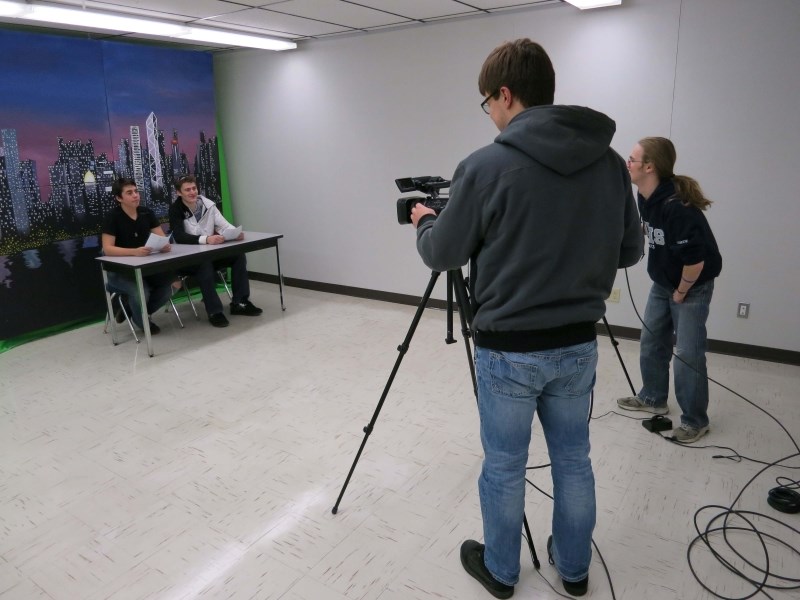Notre Dame High School has been putting the grant money it receives to good use, expanding its Career and Technologies Studies to now include the new Media, Design and Communication Arts program, which gives students the opportunity to learn about and develop skills in the visual arts fields, including, design, photography, videography and broadcasting.
The Media, Design and Communication Arts program is in its second year of operation at the school, and teacher Peter Godin said it's been a huge success and ideas for expanding the program are already in the works.
“We've already had about 75 students enrolled in the program in the first year and a half and they seem to really enjoy it,” he said. “They are really interested in what they are learning and you can see it in the way they approach projects with enthusiam. They are very self-motivated.”
He added, “Students enrolled in this course have the opportunity to further their understanding of the growing technologies and challenges faced by individuals breaking into the Media, Design and Communication Arts.”
The program is broken up into three tiers, explained Godin.
Grade 9 students are introduced to the program by developing key basic skills, such as how to create a digital presentation using Adobe Illustrator and Adobe Photoshop. Students can also explore audio creation in the first tier.
The second tier is focused on digital photography, including camera maintenance, exposure, lighting, and composition techniques. Once these have been grasped, students begin video creation, using some of the industry standards for video production, such as storyboarding and plot development. The final section of the second tier is broadcasting, where teams work together to create a news broadcast.
The third tier is about exploring careers and opportunities that may be of interest post graduation. Students explore the media's impact and the ways in which media influences our society on the local, national and international platforms. They also explore more specialized photo techniques using different camera lenses.
Students in the third tier also help mentor students in the first and second tiers, said Godin.
He said students have actually shown him new techniques to apply to some of the digital arts that he was not aware of.
“These students help each other and work together very well. They've even shown me a thing or two. I am more of a facilitator of the program than a traditional teacher,” he explained.
Godin also teaches biology and chemistry at NDHS, and said much of the interest in visual arts started with the photography club he initiated as a first-year teacher.
Then, as grants came in, the school was able to purchase the required equipment to facilitate a program like this.
“I don't know if this program could exist without the grants and donations from local businesses and the students' interest and the commitment from Lakeland Catholic,” he said. “We're very grateful.”
Last month the school received a $10,000 grant to go towards the program from Imperial Oil.
Around this same time last year, the school received a $15,000 grant, also from Imperial Oil, which went towards the purchase of new computers, cameras and software, as well as upgrades to the CTS lab.
Godin said these funds, along with other grants will continue to go towards expanding the program, allowing more students to enroll, as well as keeping equipment functioning and up-to-date.
He said plans are already in the works to develop a fourth tier for the program and to add a journalism component in the coming years.
He said the skills not only transfer between programs in school, but these are skills applicable in the working world as well.
Godin added, “Teamwork, co-operation and communication are all essential life skills that leaders in the program share with each other.”



